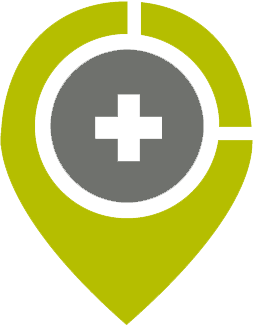Lower back pain – debunking the myths
There are a lot of myths about lower back pain, a major cause of sickness absence from work around the world. In a bid to help both clinicians and patients, and drawing on a campaign by the Irish Society of Physiotherapists, Medstars and consultant spinal surgeon, Professor Mushtaque Ishaque, debunk the myths and provide advice about the most effective treatment.

The truth about back pain myths
The common myths about back pain are:
- Hurting your back almost always leads to chronic back pain;
- Having back pain means that you should stay in bed and rest;
- More pain means that your spine is more likely to be damaged;
- Back pain is usually due to something being ‘out of place’;
- Back pain diagnosis and treatment requires x-rays, scans and operations.
None of these are true for the majority of people with lower back pain. Research shows that most people recover well with the right treatment, and do not go on to develop chronic pain. Mushtaque adds that, ‘Our backs are remarkably robust. It takes a huge amount of force to fracture the spine if there is no underlying condition such as Osteoporosis.’ And far from bed rest being the best thing, it can actually make pain worse.
People with the same injury often experience very different levels of pain, which means that pain level is a very poor indicator of the severity of the injury. It is also very unlikely that anything will be ‘out of place’. The success of manipulative techniques is more likely to be due to moving or exercising the muscles.
And finally, x-rays and scans seldom lead to better diagnosis. Most lower back pain is non-specific, meaning that investigation is unlikely to find an obvious cause.

Simple but effective treatment
So how should patients with lower back pain be treated? The good news is that the best treatment is straightforward, being a combination of advice and exercise.
First, a healthcare professional should carry out a screen for any serious problem. In a very small number of cases, further tests may be ordered, but they are not necessary for most people.
Research shows that people recover best if they are provided with accurate information about lower back pain. For example, it may be helpful to explain that most people with acute lower back pain recover well, especially if they take exercise, and that lower back pain is unlikely to be the result of a serious structural problem.
People should be encouraged to return to normal activities as quickly as possible, including exercise, and should avoid bed rest. They may also need to be helped to understand that yes, exercise may hurt initially, but this is a normal response to starting to take exercise. It is unlikely to be because of any further damage to their back. It is about using your back as normally as possible.
Mushtaque advises, ‘On the flip side, if you are in acute pain it is not sensible to continue aggravating the muscles and joints whilst it hurts. Rest it for a few days whilst it is acutely painful. Rest means still doing things that don’t hurt. Take some simple pain killers such as paracetamol and an anti inflammatory such as Ibuprofen. Whilst doing this, keep the back moving with very simple exercises such as gentle walking. Try to walk for 40 minutes a day if possible. Swimming, rowing and cycling are also safe exercises for the back. You should avoid excessive bending, twisting and heavy lifting. Unfortunately gardening is particularly good at provoking back pain so little and often if absolutely necessary. Also it is important to learn to read your back. So if you feel a twinge you need to recognise it and change the way you are doing whatever it is that provoked the twinge. It is about “behaviour modification”’.
Helping to address the problem
Research shows that people who are fearful about future pain, rest excessively, who cannot control or cope with their pain, and who are concerned that they may have a serious structural problem, are most likely to become more disabled. Helping patients to address these concerns and behaviours is the most effective treatment for lower back pain that anyone can possibly provide.
You can book a consultation with consultant spinal surgeon, Professor Mushtaque Ishaque, here. Only 4% Of Mushtaque’s patients need surgery to improve their symptoms.
Medstars Medical Concierge Service
Looking for extra guidance when it comes to your healthcare? Sometimes interpreting medical information and making the best decisions can be daunting and complicated. Our private medical concierge service provides easy access to top UK health experts. We guide our patients with genuine choice and trust, offering a bespoke service for anyone in the world seeking private UK healthcare. Learn more about Medstars Medical Concierge Service. Want to learn more about providing our medical concierge service as an employee benefit? Learn more about Medstars Medical Concierge for Business.

